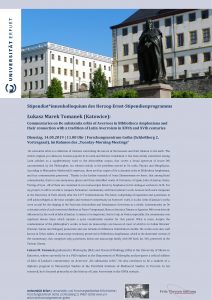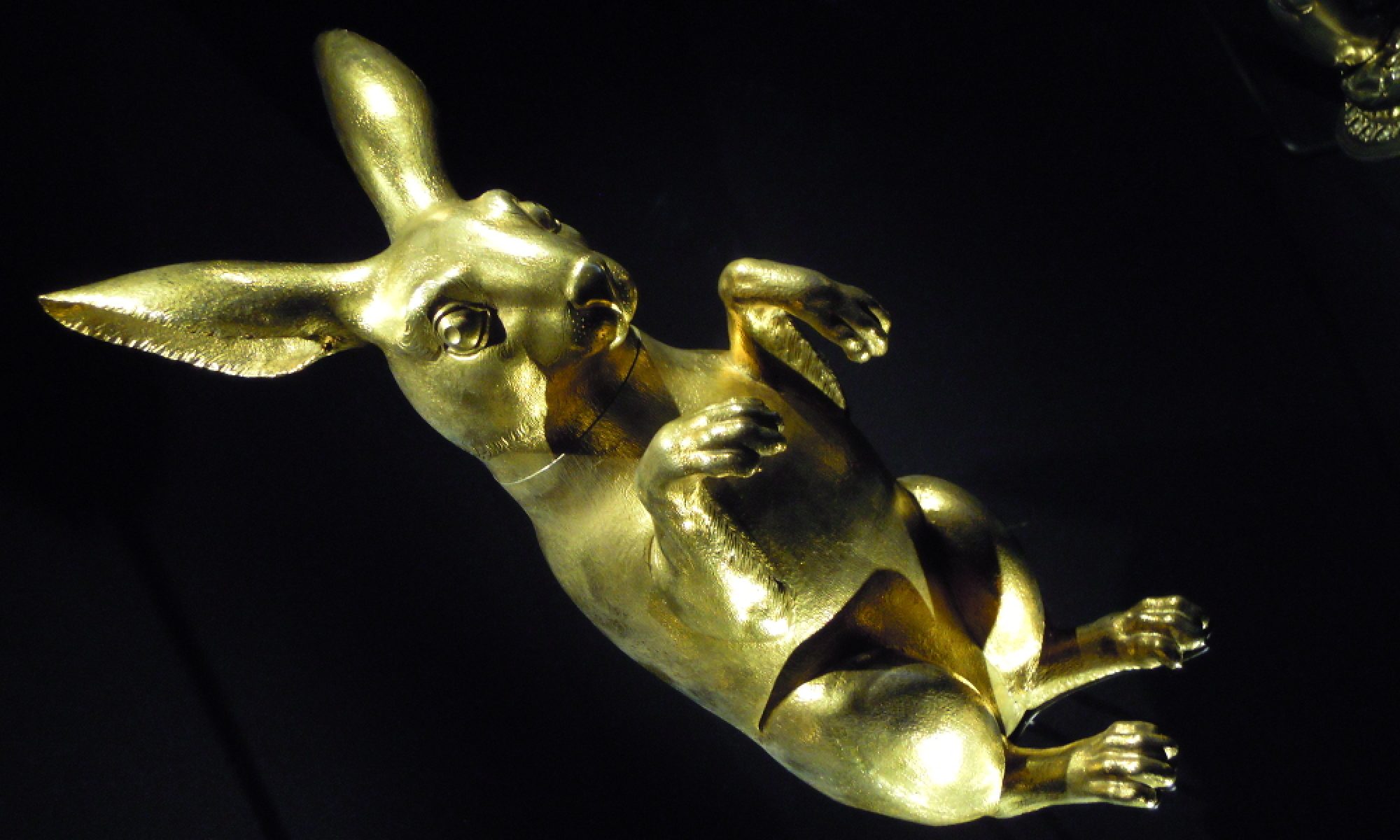Am Dienstag, den 14. Mai um 11:00 Uhr spricht im Rahmen des „Tuesday Morning Meetings“ unser HES-Stipendiat Łukasz Marek Tomanek über sein momentanes Projekt „Commentaries on De substantia orbis of Averroes in Bibliotheca Amploniana and their connection with a tradition of Latin Averroism in XIVth and XVth centuries.“ Der Vortrag findet im Vortragsaal des Forschungszentrums statt, alle Interessierten sind herzlich willkommen.
Abstract
De substantia orbis is a collection of treatises concerning the nature of the heavens and their relation to the earth. The Arabic original, yet unknown, became popular in its Latin and Hebrew translation. It has been widely considered among Latin scholars as a supplementary work to the Aristotelean corpus, that covers a broad spectrum of issues left uncommented by the Philosopher, but related strictly to the problems moved in De coelo, Physics and Metaphys ics. According to Mieczysław Markowski’s repertory, there are four copies of De substantia orbis in Bibliotheca Amploniana, and four commentaries preserved . Thanks to the further research of Ivana Zimmermann we know, that among listed commentaries, there is one anonymous glossa and three identified works of Ferrandus of Spain, John of Jandun, Henry Totting of Oyta . All of them are contained in two manuscripts listed by Amplonius in his catalogue written in 1410. For my project, it will be crucial to compare Fernandus’ commentary with later Jandun’s work, because both were composed at the University of Paris shortly after the 1277 Condemnations. The latter, comprising of exposition and questiones, is well acknowledged as the most complex and extensive commentary on Averroes’ work. It is also John of Jandun’s works were crucial for the shaping of the Padovian Aristotelism and Renaissance Averroism as a whole. Commentaries on De substantia orbis of such renowned thinkers as Pietro Pomponazzi, Marcus Antonius Zimara or Agostino Nifo were directly influenced by the work of John of Jandun. It seems to be important, that in Italy, in Venice especially, the commentary was reprinted eleven times which remains a quite considerable number for that period. What is more, despite the condemnation of the philosopher’s works, at least six manuscripts are known of, most of which is in Italian libraries‘ (Vatican, Venice and Bologne) possession and one remains in Biblioteca Colombina in Seville. His works were also well known in Erfurt milieu. A manuscript testimony preserved in Bibliotheca Amploniana, which is the shortened version of the commentary, that comprises only questiones, forms one manuscript family with MS Barb. lat. 340, preserved in the Vatican Library.
ics. According to Mieczysław Markowski’s repertory, there are four copies of De substantia orbis in Bibliotheca Amploniana, and four commentaries preserved . Thanks to the further research of Ivana Zimmermann we know, that among listed commentaries, there is one anonymous glossa and three identified works of Ferrandus of Spain, John of Jandun, Henry Totting of Oyta . All of them are contained in two manuscripts listed by Amplonius in his catalogue written in 1410. For my project, it will be crucial to compare Fernandus’ commentary with later Jandun’s work, because both were composed at the University of Paris shortly after the 1277 Condemnations. The latter, comprising of exposition and questiones, is well acknowledged as the most complex and extensive commentary on Averroes’ work. It is also John of Jandun’s works were crucial for the shaping of the Padovian Aristotelism and Renaissance Averroism as a whole. Commentaries on De substantia orbis of such renowned thinkers as Pietro Pomponazzi, Marcus Antonius Zimara or Agostino Nifo were directly influenced by the work of John of Jandun. It seems to be important, that in Italy, in Venice especially, the commentary was reprinted eleven times which remains a quite considerable number for that period. What is more, despite the condemnation of the philosopher’s works, at least six manuscripts are known of, most of which is in Italian libraries‘ (Vatican, Venice and Bologne) possession and one remains in Biblioteca Colombina in Seville. His works were also well known in Erfurt milieu. A manuscript testimony preserved in Bibliotheca Amploniana, which is the shortened version of the commentary, that comprises only questiones, forms one manuscript family with MS Barb. lat. 340, preserved in the Vatican Library.
